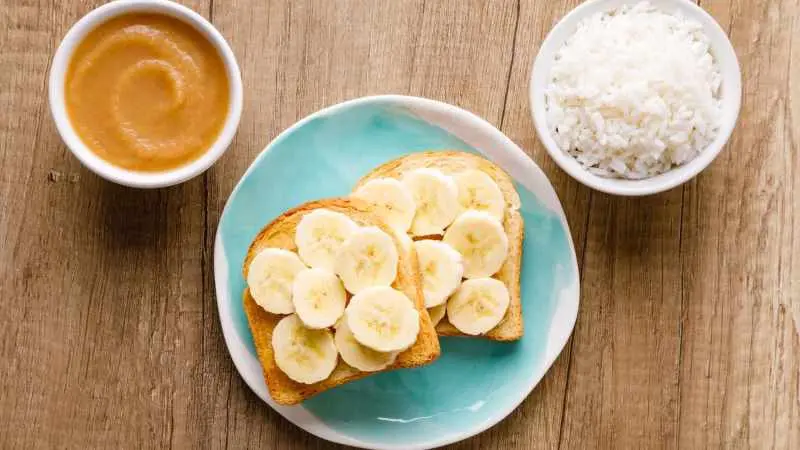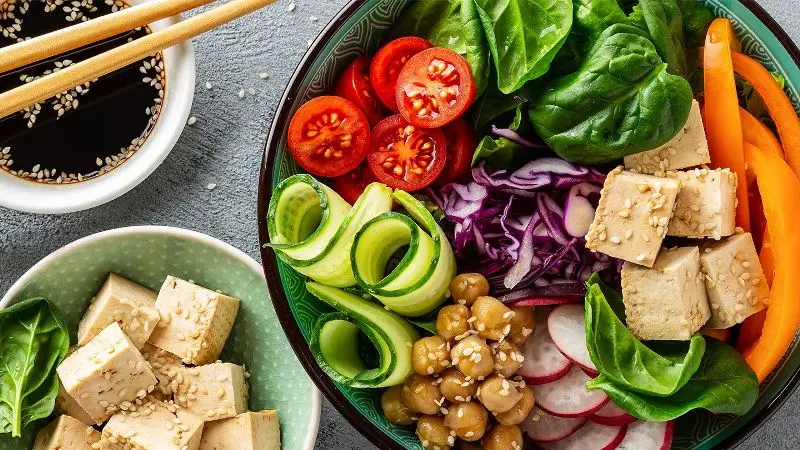
The BRAT diet is a well-known eating plan recommended for individuals experiencing gastrointestinal distress, such as diarrhea, vomiting, or an upset stomach. The acronym BRAT stands for Bananas, Rice, Applesauce, and Toast, which are the key foods included in this diet.
These foods are chosen for their blandness, low fiber content, and ease of digestion, making them gentle on the stomach. In this comprehensive guide, we will provide a detailed list of foods that can be consumed while following the BRAT diet.
BRAT Diet Food List
- Bananas: Bananas are a staple food on the BRAT diet. They are easy to digest, provide energy, and are rich in potassium, which can help replenish electrolytes lost during diarrhea or vomiting.
- Rice: White rice is a central component of the BRAT diet. It is low in fiber, gentle on the stomach, and provides easily digestible carbohydrates for energy. Plain white or jasmine rice is recommended, avoiding added sauces or seasonings.
- Applesauce: Unsweetened applesauce is often included in the BRAT diet as it is mild, easy to digest, and provides some natural sugars for energy. Look for unsweetened varieties without added sugars or artificial sweeteners.
- Toast: Plain toast made from white bread is typically recommended on the BRAT diet. It is easy to digest and can provide some carbohydrates for energy. Avoid heavily buttered or seasoned toast.
- Crackers: Plain, saltine-type crackers can be included in the BRAT diet. They are easily digestible and can help settle an upset stomach.
- Broth: Clear, low-sodium broths, such as chicken or vegetable broth, can provide hydration and electrolytes during gastrointestinal distress. Avoid broths with added spices, seasonings, or high sodium content.
- Boiled Potatoes: Boiled potatoes, when peeled and consumed plain, can be a gentle source of carbohydrates for energy. They should be thoroughly cooked and without added oils, spices, or seasonings.
- Ginger: Ginger is known for its soothing properties and can help alleviate nausea and settle the stomach. It can be consumed as ginger tea, ginger candies, or ginger-infused water.
- Chicken or Turkey: Lean proteins like boiled or grilled chicken or turkey can be included in the BRAT diet once symptoms improve. It’s important to opt for skinless, plain preparations without added fats or spices.
- Steamed Vegetables: Once the digestive system starts to recover, steamed vegetables such as carrots, zucchini, or green beans can be introduced. Ensure they are thoroughly cooked and without added oils or seasonings.
- Low-Fiber Fruits: As the diet progresses, low-fiber fruits like peeled and cooked apples or pears can be included. They should be well-cooked and without added sugars or sweeteners.
- Yogurt: Plain, unsweetened yogurt can be consumed in moderation once symptoms improve. Yogurt contains probiotics that can help restore the balance of beneficial bacteria in the gut.
Foods to Avoid on the BRAT Diet
While following the BRAT diet, it’s important to avoid certain foods that can worsen gastrointestinal distress. These include:
- High-Fiber Foods: Avoid high-fiber foods such as whole grains, raw vegetables, beans, and legumes, as they can be harder to digest and may worsen symptoms.
- Fatty Foods: Stay away from fried and greasy foods, fatty cuts of meat, and high-fat dairy products, as they can be harder to digest and may exacerbate digestive issues.
- Spicy and Seasoned Foods: Foods that are spicy, heavily seasoned, or contain strong spices like chili, garlic, or onion should be avoided, as they can irritate the digestive system.
- Caffeinated and Alcoholic Beverages: It’s best to avoid caffeinated drinks, alcohol, and carbonated beverages, as they can stimulate the digestive system and may worsen symptoms.
Conclusion
The BRAT diet provides a list of bland, low-fiber, and easily digestible foods that can help soothe the digestive system during episodes of gastrointestinal distress. While it’s important to follow this diet for a short period to allow the stomach to settle, it’s crucial to reintroduce a balanced and varied diet as symptoms improve.
If gastrointestinal symptoms persist or worsen, it’s important to consult with a healthcare professional for proper diagnosis and guidance tailored to your specific situation.









